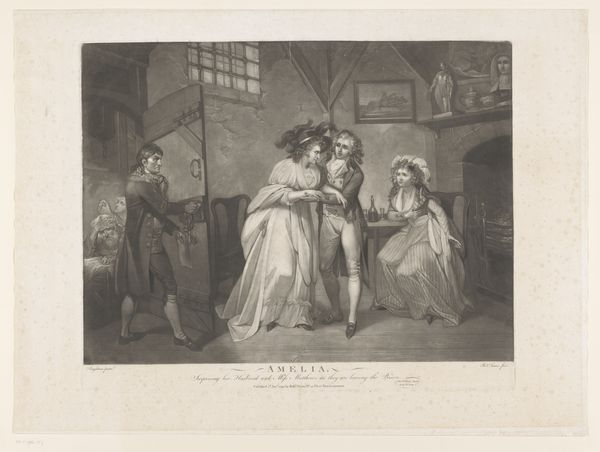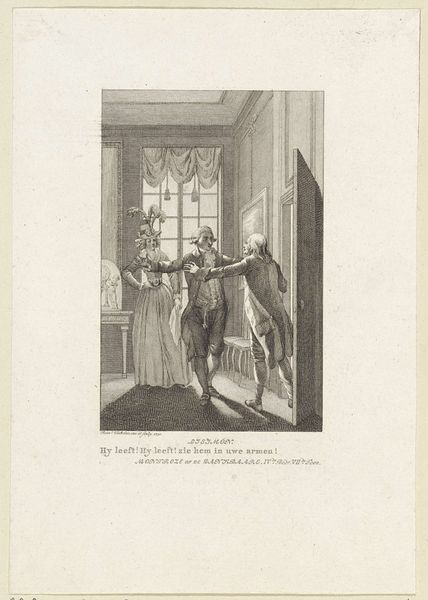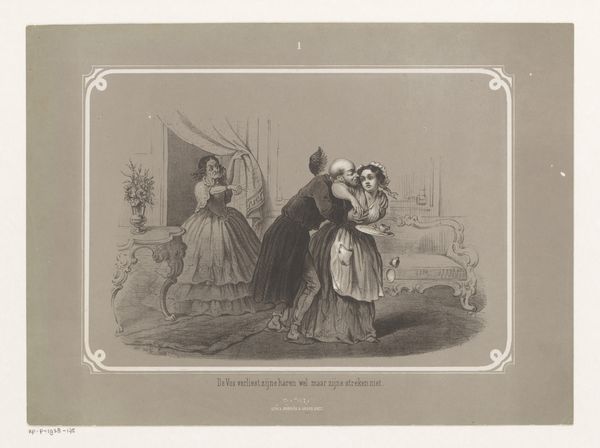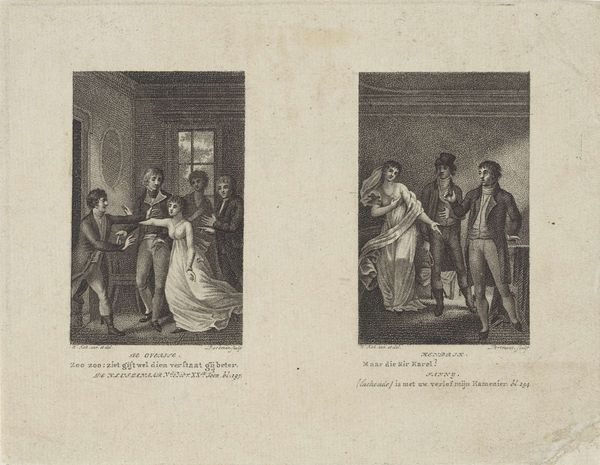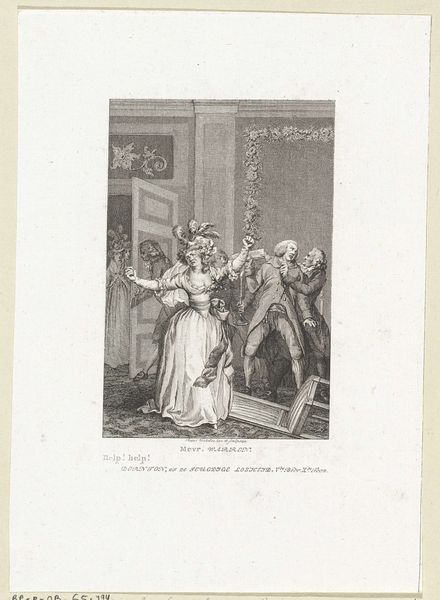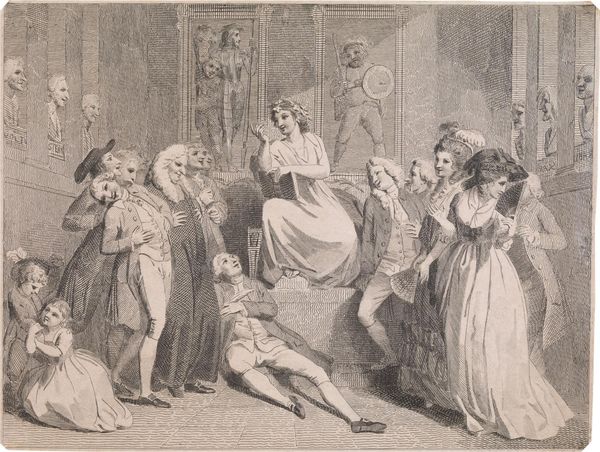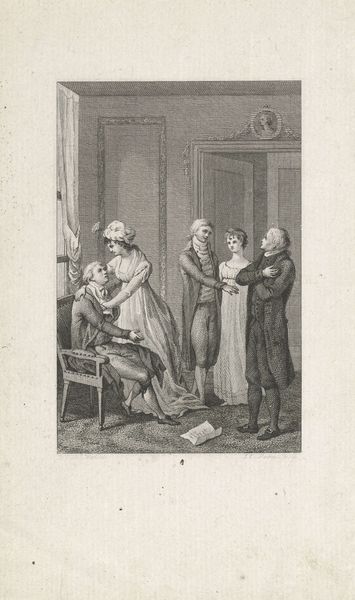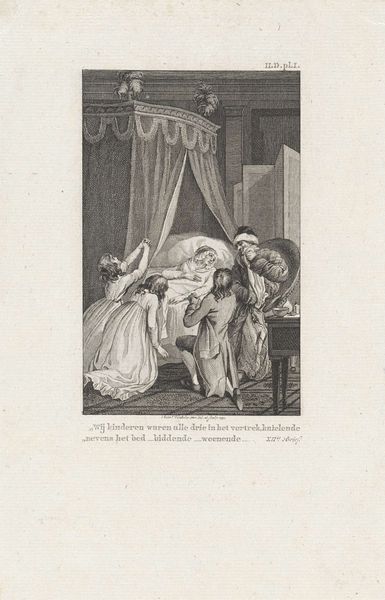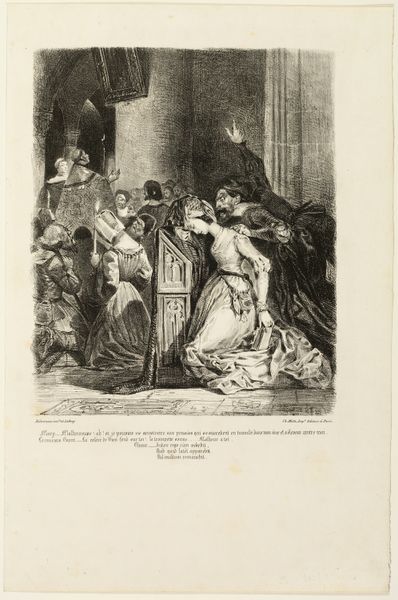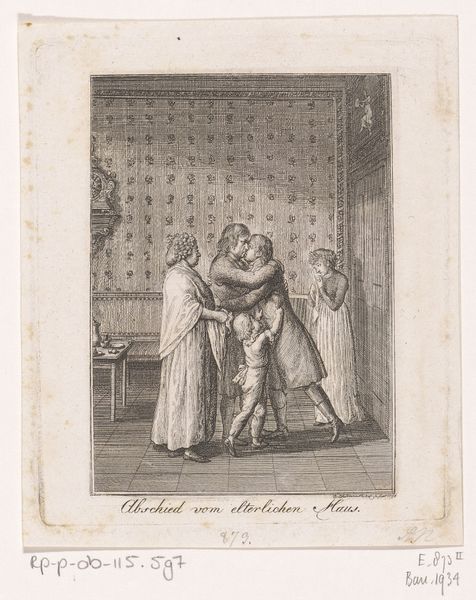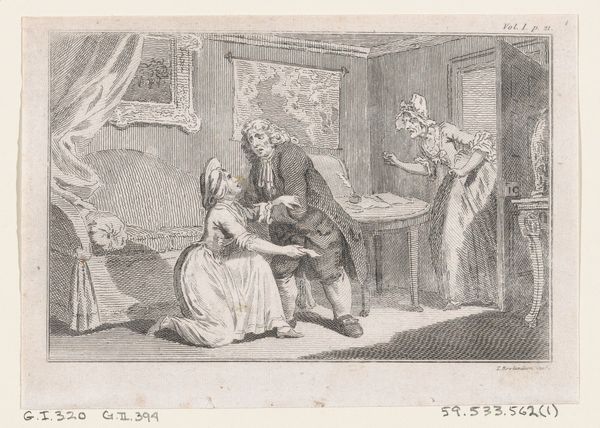
print, engraving
#
neoclacissism
#
aged paper
#
16_19th-century
#
narrative-art
# print
#
old engraving style
#
19th century
#
genre-painting
#
engraving
Dimensions: height 96 mm, width 121 mm
Copyright: Rijks Museum: Open Domain
Editor: Here we have "Verwelkoming van soldaten," or "Welcoming Soldiers," an engraving from 1803 by Willem Kok. It feels very domestic, a scene of reunion. What catches your eye about it? Curator: Considering this print through a materialist lens, I am immediately drawn to the means of its production. Engraving as a reproductive technique democratized art in the early 19th century, making images accessible to a wider, potentially middle-class audience. Editor: So the material itself changed how art was consumed? Curator: Exactly! Think about the paper itself - likely relatively inexpensive. And the labor: the skilled hand of the engraver meticulously translating an image onto a plate. Who was commissioning these engravings? For what purpose? Were they intended for individual enjoyment, or wider distribution as political commentary? Editor: It's interesting to think about this scene of domestic intimacy being reproduced on a potentially mass scale. The detail suggests skilled labor. Curator: Precisely. And notice how the scene depicts *ordinary* people – not the idealized subjects of high art, but rather figures engaging in emotional reunion. It suggests a growing interest in the everyday experiences of ordinary people, rendered accessible via printmaking technologies. The clothing, the bare room: What might these details tell us about the social conditions of the time, and the relationship to war. Editor: So by focusing on the material and the production of this engraving, we gain insight into the democratization of art and the rising interest in depicting common people? It shifts our perspective from just the subject matter to how it was made and disseminated. Curator: Indeed. It prompts us to think beyond the surface of the image and towards its material existence within a specific historical and social context. It’s not just about what’s depicted, but *how* and for *whom*.
Comments
No comments
Be the first to comment and join the conversation on the ultimate creative platform.
